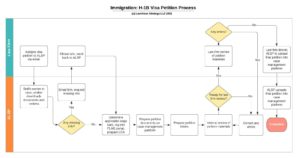By Mike Short and Yvonne Nath
Within many law firms, any variations on the word “commoditized” (i.e., commodity, commodification, commodified) are very bad words with negative connotations. Lost in this traditional perspective are the facts that a) commoditization is a natural force in any competitive marketplace, b) those who are practicing in a commoditized area of law are not poorer lawyers; they simply are practicing in an area that is subject to natural market forces, and c) the profitability of commoditized work has never been more important. Furthermore, commoditized work can be a gold mine, if the work is handled properly and with profitability/profit margin in mind.
The key starting point is any routinized flow of work…usually one for which you are, or are increasingly, competing on price AND that has a sufficiently high volume to maintain your interest. Even with capacity, however, further investments are hindered by the profitability of the work and an inability to look at the work differently.
As an example, let’s look at a standard H-1B visa application. Volume is high yet some firms may charge fees anywhere between $1,500 and $3,000 for standard processing. This matter requires an excellent lawyer (supported by a team) who knows how to expertly handle the related legal aspects of the matter but the marketplace has driven the fees down into a menu-like range. The mix of timekeepers and non-timekeepers who work on a visa application will vary by firm, but for demonstrative purpose, here we present a couple of simplified scenarios to compare how a firm’s profit margin on each application can be improved if the firm outsources portions of the work to an Alternative Legal Service Provider (ALSP).
Scenario 1: Partner supported by a Paralegal

Scenario 2: Partner supported by a Paralegal and an ALSP.
In Scenario 2, we can create a workflow that is shared between the law firm and a qualified ALSP:
In Scenario 2, as staffed and divided in the following table, the firm can improve its margin by 32 percentage points when it works with an ALSP. The firm also saves eight hours of time that can be applied toward other and more lucrative billable work.

Furthermore, with the ALSP model, this firm could process 3 times as many H-1B visa applications on the same law firm hours to significantly increase the profit contribution from this body of work.

The integration of ALSPs into law firm workflows continues at a slow and deliberate pace. Some argue that control over the workflow cannot be shared (it can) while others (many?) either cannot or avoid measuring matter profitability for a variety of reasons, thus side-stepping this entire analysis. There is no right or wrong answer for any given law firm but there are risks and rewards that require deep analysis. The biggest risk for any anti-ALSP law firm is that some major competitor is embracing collaboration with ALSPs, and uses the savings to compete for clients, and uses the additional profits to create real and permanent competitive advantages.
Can you afford such a risk?
Posted In

